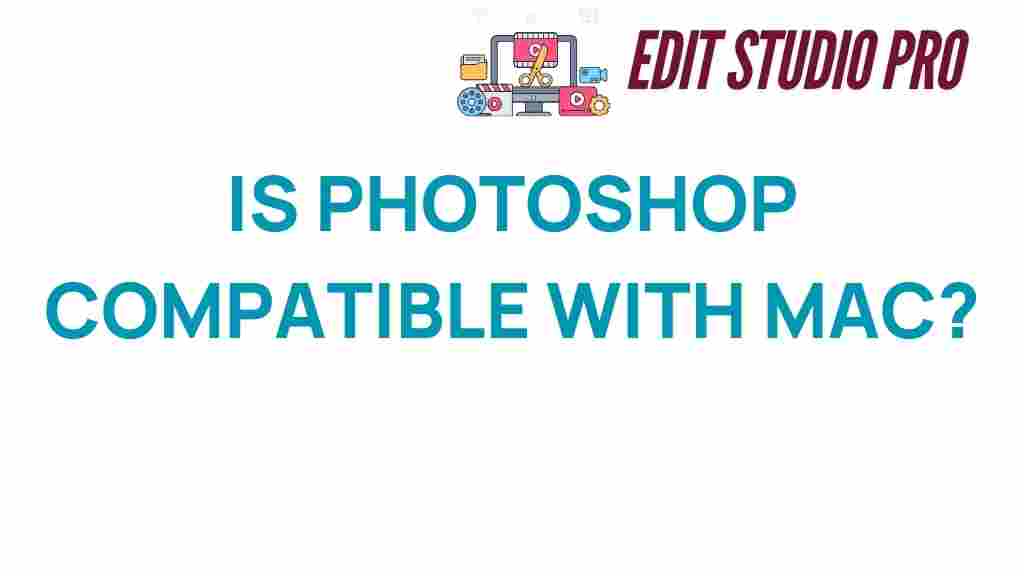Is Photoshop Truly Compatible with Mac? Unveiling the Truth Behind the Software
Photoshop has long been a cornerstone in the world of graphic design and photo editing, widely recognized for its powerful features and user-friendly interface. However, a common question among potential users is whether Photoshop is truly compatible with Mac systems. This article will delve into the compatibility of Photoshop with Mac, exploring its performance on various operating systems, user experience, and how it compares to other Adobe software.
Understanding Photoshop and Mac Compatibility
Adobe Photoshop is a sophisticated tool that has evolved significantly over the years. Its compatibility with Mac has been a topic of interest for many graphic designers, photographers, and creative professionals. The good news is that Photoshop is fully compatible with Mac operating systems, allowing users to harness its robust editing capabilities seamlessly.
With Photoshop, users can create stunning graphics, edit photos, and manipulate images with precision. The software is designed to take advantage of the Mac’s hardware and software ecosystem, ensuring optimal performance. Here’s what you need to know about the compatibility between Photoshop and Mac:
- Supported Versions: Photoshop regularly updates its software to align with the latest Mac OS versions. It is essential to keep both your operating system and Photoshop up to date for the best experience.
- System Requirements: Check the system requirements for the latest version of Photoshop. Generally, newer versions demand higher specifications, so ensure your Mac meets these requirements.
- User Experience: Many users report a smooth and intuitive experience using Photoshop on Mac, with optimized shortcuts and interface layouts that cater to Mac users.
Why Choose Photoshop for Graphic Design and Photo Editing?
Photoshop is not just another photo editing tool; it is a comprehensive suite of creative tools that cater to both beginners and professionals. Here are a few reasons why Photoshop is often the go-to software for graphic design and photo editing:
- Advanced Editing Features: Photoshop offers a variety of features such as layers, masks, and advanced selection tools that allow for intricate edits.
- Extensive Plugin Support: The software supports numerous plugins that can enhance functionality, making it adaptable to various creative needs.
- Integration with Other Adobe Software: Photoshop works well with other Adobe products like Illustrator and Lightroom, creating a cohesive workflow for users.
Step-by-Step Process: Installing Photoshop on Mac
If you’re ready to start using Photoshop on your Mac, follow these steps to ensure a smooth installation process:
- Check System Requirements: Visit the Adobe website to verify that your Mac meets the minimum system requirements for the version of Photoshop you want to install.
- Create an Adobe Account: If you don’t already have one, sign up for an Adobe account. This account will allow you to manage your subscriptions and access Adobe software.
- Download the Creative Cloud App: Download and install the Adobe Creative Cloud app from the Adobe website. This app will be your hub for all Adobe software.
- Install Photoshop: Once the Creative Cloud app is installed, open it and navigate to the “Apps” section. Find Photoshop and click “Install.”
- Launch Photoshop: After installation is complete, you can launch Photoshop directly from the Creative Cloud app or your Applications folder.
Optimizing Your Photoshop Experience on Mac
To ensure that you get the best performance out of Photoshop on your Mac, consider the following tips:
- Keep Software Updated: Regular updates from Adobe include performance improvements and bug fixes, so keep your software up to date.
- Optimize Preferences: Adjust Photoshop’s preferences for performance, such as allocating more RAM to the application and adjusting cache levels.
- Utilize Mac’s Native Features: Take advantage of Mac features like Retina display for better image quality and Mission Control for easier multitasking.
Troubleshooting Common Issues with Photoshop on Mac
While Photoshop is generally reliable on Mac, users may occasionally face issues. Here are some common problems and troubleshooting tips:
- Photoshop Won’t Launch: If Photoshop fails to open, try restarting your Mac and relaunching the application. If the problem persists, consider reinstalling Photoshop.
- Performance Lags: If you experience slow performance, check if other applications are consuming too much RAM. Closing unnecessary tabs or applications can help.
- Missing Tools: If tools appear to be missing, reset the workspace by going to Window > Workspace > Reset [Workspace Name].
For more detailed troubleshooting steps, you can visit the Adobe Help Center which provides extensive support for users.
Exploring Alternative Adobe Software for Mac
While Photoshop is a powerful tool, Adobe offers a suite of creative software that can complement your graphic design and photo editing needs. Here are some alternatives worth considering:
- Adobe Lightroom: Best for photo editing and management, Lightroom excels in organizing and enhancing photos.
- Adobe Illustrator: Ideal for vector graphics, Illustrator is perfect for designing logos and other scalable graphics.
- Adobe InDesign: This software is great for layout design, especially for print media like brochures and magazines.
Conclusion
In conclusion, Photoshop is indeed compatible with Mac, offering a robust platform for graphic design and photo editing. With its advanced features, seamless user experience, and integration with other Adobe software, Photoshop remains a top choice for creative professionals. By following the installation steps and optimizing your settings, you can enhance your overall user experience. Whether you are a beginner or a seasoned professional, Photoshop on Mac provides the creative tools necessary to produce outstanding work.
For those looking to explore more about Adobe’s offerings, check out their Creative Cloud subscription for access to a complete suite of creative tools.
This article is in the category Software & Tools and created by EditStudioPro Team
